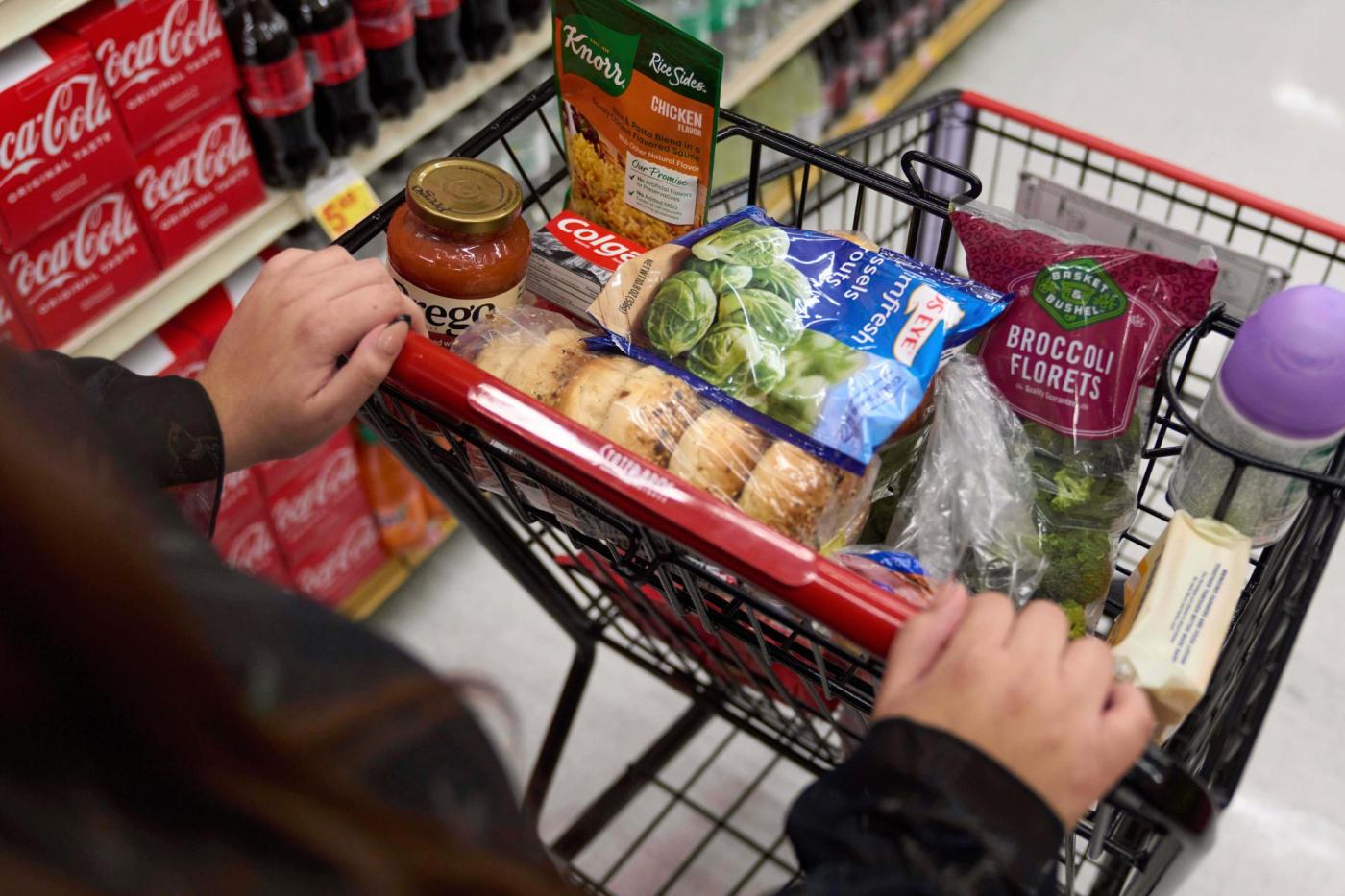A federal program that provides food assistance to 40 million low-income people could be at risk in November if the government shutdown isn’t resolved by then. In at least some places, new applications for the program are not being approved. However, there’s still a lot of uncertainty about the Supplemental Nutritional Assistance Program, known as SNAP or food stamps, a vestige of a previous incarnation of food aid. Here’s a look at where things stand.
### The Food Aid Program Benefits 1 in 8 People in the US
SNAP is a major piece of the nation’s social safety net, touching nearly 1 in 8 people in the country each month. Recipients receive benefits on prepaid cards that can be used for groceries.
### The Other Big Pieces of the Safety Net
Social Security and Medicaid are expected to continue paying benefits during the shutdown. But because of the way it’s funded, SNAP is vulnerable.
In the accounting year that ended on September 30, 2024, SNAP cost just over $100 billion, including half of the state administrative costs covered by federal taxpayers. It provided an average of $187 a month to 41.7 million people.
### States Were Warned About November Benefits
When the government shut down on October 1 amid a congressional budget impasse, a few things were clear about SNAP: benefits would continue through October, but it was unclear what would happen after that.
The U.S. Department of Agriculture, which oversees the program, sent letters on October 10 to state agencies administering it, telling them not to send certain files to the contractors that would clear the way for EBT cards to be loaded at the start of November. Different states send that information at different points in the month.
Carolyn Vega, associate director of policy analysis at Share Our Strength, an anti-poverty advocacy group, said that pausing the sending of this information now doesn’t necessarily mean that cards can’t be loaded next month, with or without the resumption of government operations. But she added, “The question marks are trending in a bad direction for November.”
### Finding Money During the Shutdown Could Be a Challenge
A budget agreement that ends the shutdown would also restore SNAP funding. Short of that, Vega said it’s possible state or federal governments could free up money to bridge the gap.
She noted that ahead of a looming 2015 shutdown, similar warnings were released and then reversed even before Congress reached a deal to keep the government running. But because of the sheer amount of money involved, that’s a significant challenge.
General SNAP costs far exceed those of other food aid programs. For example, the Special Supplemental Nutritional Program for Women, Infants, and Children (WIC) helps 6 million low-income mothers, young children, and expectant parents purchase nutritional staples. President Donald Trump’s administration has shored up WIC with $300 million, but doing the same for SNAP could cost about $8 billion a month.
At tens to hundreds of millions of dollars monthly per state, finding state money to cover SNAP costs could also be difficult.
Peter Hadler, deputy commissioner of Connecticut’s Department of Social Services, told lawmakers that he doesn’t expect the federal government to reimburse states if they cover SNAP benefits during the shutdown. He also said he expects the EBT network will be shut off at the retail level if the program isn’t federally funded. In that case, even people with a balance on their cards would not be able to access benefits.
### States Are Figuring Out How to React
More than 1 in 5 New Mexico residents receive SNAP benefits, at a cost of about $90 million a month. The prospect of those benefits disappearing is raising alarms.
“I think it’s direct harm to New Mexicans, to New Mexico’s communities and New Mexico’s economy that is unprecedented,” said state Rep. Nathan Small, a Democrat and chair of the main budget-writing committee. However, he added it’s too early to say whether New Mexico might find options to mitigate any harm if benefits are cut off.
“We’re following up,” said Charles Sallee, director of the Legislature’s budget and accountability office, “to verify whether food stamps is really out of money or if this is just a tactic that the administration is playing in the overall negotiation.”
In Minnesota, the Department of Children, Youth, and Families told counties and Native American tribes not to approve new SNAP applications after Wednesday. The state was also preparing to inform recipients on October 21 that benefits would not be issued for November barring any changes.
“An interruption in receiving food assistance can be very disruptive, even dire, for the lives of Minnesota’s families,” said Tikki Brown, the department commissioner.
### Other SNAP Changes Are Starting to Kick In
The government shutdown isn’t the only development that could cut access to SNAP. The broad policy and tax law that Congress passed and President Trump signed in July also calls for changes to the program.
Adults with children aged 14 to 17 will no longer be exempt from a work requirement to receive benefits, and neither will people aged 55 through 64. These policies are already in effect, and some people could begin losing coverage around the start of January.
Another change in the law will come in future years. Starting in October 2026, states will be required to pick up three-fourths of the administrative costs. The following year, states with higher benefit error rates will be required to pay some of the benefit costs.
While it’s possible Congress could modify some of these policies, simply resuming government operations will not change them.
—
The future of SNAP remains uncertain amid the shutdown and upcoming policy changes, raising concerns for millions who rely on this vital food aid program.
https://www.chicagotribune.com/2025/10/16/food-assistance-shutdown/

Be First to Comment